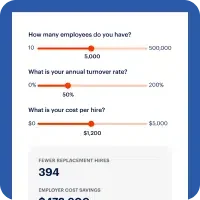Since March 2020, there have been massive changes to the American workforce. Many families’ financial situations drastically changed as one or both spouses lost their jobs, were laid off, had hours reduced or were forced to take a pay cut. This personal financial stress can make employees 4.9x more likely to have lower work quality. While many employees’ companies transitioned to remote work, this “new world of work” has its own set of issues, as burnout and lack of boundaries between personal and professional life have become commonplace for those who are lucky enough to still be employed.
According to a study by Employee Benefit News, 25% of employees are planning to leave their jobs post-COVID, as burnout continues to wear down morale and productivity. Many employees no longer feel that they are “working from home,” but rather that they are “living at work,” with employers pressuring them to blur the personal boundaries between the two more and more. With little to do outside the home during the lockdown, many employees report feeling always “on call,” and unable to unplug, relax and truly detach from their professional lives. Not only is this increasing their frustration and decreasing their level of productivity while working, it is also leading to a slew of mental health issues, such as worsening depression, anxiety, irritability, restlessness and decision fatigue.
This cultural trend, coupled with the seemingly ceaseless external stress of the past year, has wreaked havoc on many employees’ ability to function at the same level they did pre-pandemic. Not only has the COVID-19 pandemic itself created massive amounts of worry, but the political tensions of an election year coupled with seemingly endless instances of racial injustice have been almost impossible to process all at the same time. Also, many employees are stuck in small apartments with no outdoor space, leading to increased feelings of isolation. The constant barrage of stress and anxiety about one’s own health and well-being, as well as the health and well-being of their loved ones and the world at large, has been terrifying to say the least.
All this new and compounding stress was even harder to process when so many people lost access to their favorite stress-relieving activities. Gyms, fitness studios, art studios, bars and restaurants were all closed or operating at limited capacity for most of the pandemic. Even casual nights out at restaurants with friends or family members were suspended. Many employees became effectively housebound during the quarantine, with little to do besides work, childcare and household chores. This means that many employees are working much longer hours, and this is becoming a cultural expectation placed on them by management due to the limited number of activities available.
Employees need the leaders in their organizations to step up and prioritize their health and well-being above all else in order to combat the inevitable burnout and turnover from this kind of lasting stress. Encouraging employees to take mental health days and respecting the boundaries of set working hours are great ways to create helpful boundaries between work and personal life. Small changes like this can have massive positive effects on employees, improve their view of their employer and decrease turnover.
Implementing creative benefits solutions, such as offering on-demand pay, can also help dramatically decrease turnover. In fact, 74% of DailyPay users report feeling less financial stress, which can help them to be much more productive during working hours. Employers can improve trust with their employees by providing them with a financial lifeline, helping them find a much-needed reprieve from stress.
Want to learn more about how you can make the pandemic a little easier on your employees by offering on-demand pay? Request a free demo now to receive personalized advice.
CTA: Request a Demo













